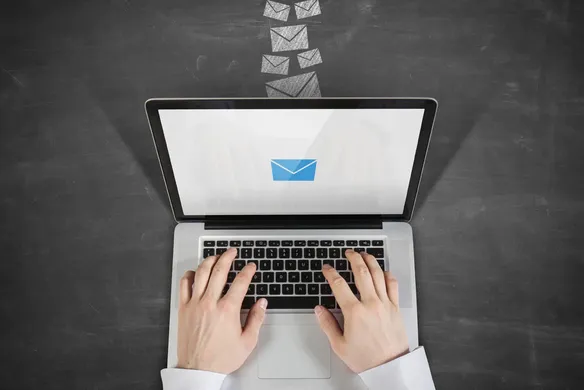Table of contents
Relationships are at the heart of your business. Which is why it’s important to maintain them even when you’re busy. Often email is the most time-efficient way to do this.
Below are some of the most common email mistakes that small business owners make, and what you can do instead to ensure a happy relationship with your customers.
Not responding quickly
When customers email you, they’re doing it because at that point in time your business is at the top of their mind. If you don’t respond quickly they can just as easily move on. A rule of thumb is to try and reply to your customers within five hours of the email.
Sometimes it’s understandable that you can’t get to it that fast – many small business owners have a long list of priorities. If you can’t respond within that time frame, ensure you have an auto-reply set up that can let your customers know that you’ve received their message and when they should expect to hear back from you. You can also include a link to some FAQs, or a telephone number where they can reach you if their enquiry is urgent.
Too long; didn’t read
Think of all the email in your inbox that you don’t have enough time to read through. No matter how important the information in your email is, you need to keep your reader’s attention. Send a succinct message. Respond to any questions clearly in the first paragraph, and then provide more context later to ensure the key points are not missed.
Misunderstanding
One of the worst mistakes you can make is assuming you know what someone is asking you. If you’re unsure about the question, it’s polite to ask a follow up question to confirm that you’re responding in the right way.
Being a robot
One of the best ways to create a relationship with your customers when communicating over email is to show that there’s a human at the other end. Make sure you clearly outline the pertinent information, but don’t be afraid to let your personality shine through.
Show empathy
It can be hard to interpret emotion and mood in an email. Be conscious of how you’re coming across to your reader as much as you consider your reader’s mood when responding to you. Are they pissed off? Then you should steer clear of emoticons. Do they love what you’re doing? You can opt for a playful, cheerful approach (and maybe even a smiley face).
Similarly, think about your salutation and sign off. If your customer responds with a formal sign off, begin your email in the same tone. For example, a ‘Kind Regards, Ben’ should be replied to with ‘Dear Ben’ instead of ‘Hey Ben’.
Hear their issue, respond with context
Customer issues can arise which are simply out of your control – when something is sold out, for example. Acknowledging the issue and giving feedback on how you’re addressing it will help establish trust and provide deliverable outcomes for your customer. For example, you can let your customer know that this particular item has been very popular, so you’re ordering a new shipment which is expected to arrive soon.
You don’t want to come across as though you’re brushing your customer’s concern aside. Addressing issues with words such as ‘No’, ‘I can’t’ or ‘I’m unable to’ may come across the wrong way. Draft your initial response, then read through it again to see if you can reframe it to something more accommodating. For example, ‘I’m really sorry that this item is unavailable right now, but we’ve placed a new order and hope to have it in stock soon. I can advise you as soon as it becomes available, or alternatively we have something similar that I’d be happy to show you’.
Following these simple tips is a first step in using email to create positive relationships with your customers.
![]()











